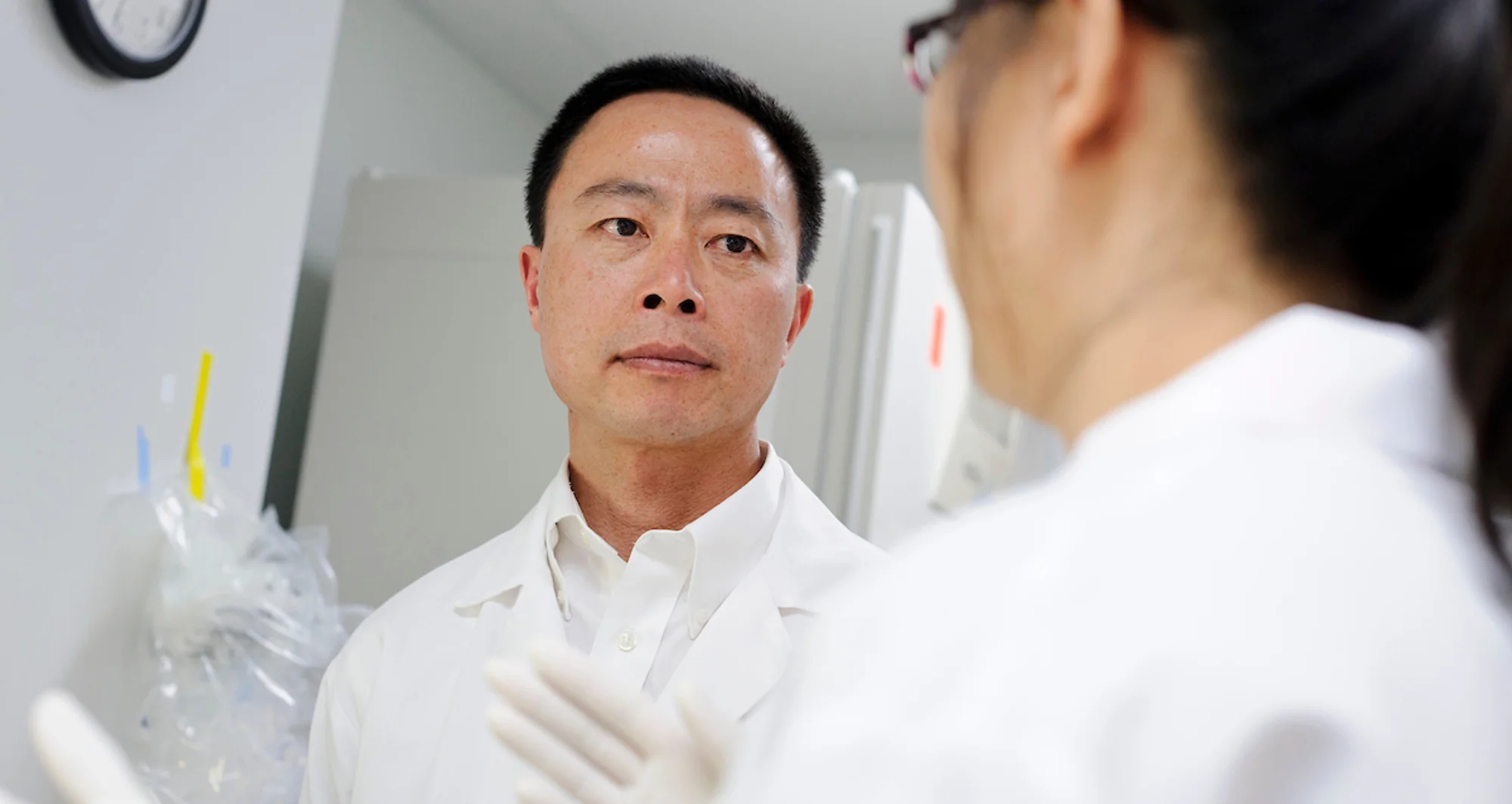Acclaimed stem cell scientist Su-Chun Zhang, MD, PhD, whose work has profoundly changed both understanding of how brain cells work and led to novel approaches for repairing or replacing them in diseases like Alzheimer’s and Parkinson’s, is joining the faculty at Sanford Burnham Prebys.
“During his entire career, Dr. Zhang has embodied the best of both basic and translational science,” said David Brenner, MD, president and chief executive officer at Sanford Burnham Prebys. “His research has foundationally advanced our understanding of how brain cells are born, develop and function, often breaking new ground, and he has then turned those discoveries into new tools and potential therapies for truly difficult and daunting neurological diseases like Alzheimer’s and Parkinson’s.”
Zhang comes from the Waisman Center at the University of Wisconsin-Madison, long acclaimed for its stem cell research. Zhang, who held the title of Steenbock Professor of Behavioral and Neural Sciences, worked at the Waisman Center for 23 years, officially retiring in August 2024.
Zhang was also a professor at the Duke-NUS Medical School, a collaboration between Duke University and the National University of Singapore, and holds the Provost’s Chair professorship at NUS.
At the University of Wisconsin, Zhang’s lab investigated how functionally different neurons and support cells are created in the developing human brain using both animal models and human stem cells, both embryonic stem cells (ESC) and induced pluripotent stem cells (iPSC).
He found that neural differentiation from human ESCs follows similar programs in vertebrate animals, but also identified unique elements, such as transcription factors and signaling pathways. The work is intended to help re-pattern or re-program specialized neural cells to needed cell types which could be used to repair injured or diseased cells in neurological conditions like Alzheimer’s disease or spinal muscular atrophy.
Specifically, in 2005, Zhang and colleagues were the first scientists in the world to successfully differentiate human blastocyst stem cells into neural stem cells, then further into the starts of motor neurons, and eventually into spinal motor neuron cells, which play important role in delivering information from the brain to the spinal cord in the human body.
The artificially generated motor neurons appeared and behaved similarly to normal natural motor neurons.
Earlier this year, Zhang’s lab described producing the first 3D-printed brain tissue that can grow and function like typical brain tissue. “This could be a hugely powerful model to help us understand how brain cells and parts of the brain communicate in humans,” he said. “It could change the way we look at stem cell biology, neuroscience, and the pathogenesis of many neurological and psychiatric disorders.”
At Sanford Burnham Prebys, Zhang will continue his stem cell research as director of the institute’s Center for Neurologic Diseases and in close proximity to BrainXell Therapeutics (pronounced brain cell), a San Diego-based company he co-founded in 2022 to translate his research into personalized regenerative cell therapies for disorders of the nervous system. BrainXell Therapeutics is affiliated with BrainXell, which Zhang co-founded in 2015 and which produces a range of high-purity, iPSC-derived human neurons for research and development with a focus on drug discovery.
“Sanford Burnham Prebys offers a perfect environment for me to continue my venture in basic and translational neuroscience/regenerative medicine research,” said Zhang, “and in particular to turn laboratory discovery to benefiting patients through close interaction with industries like BrainXell Therapeutics, my life-long goal.”
Zhang has published more than 200 papers and holds 23 patents related to stem cell research and neuroscience. He has co-authored two books on stem cells and the human nervous system, and edited chapters in 15 other books. He was editor of the journal Human Embryonic Stem Cells in 2005 and a current member of the editorial boards of three other journals.
He is a member of the American Society of Neuroscience and the International Society of Stem Cell Research.
Zhang earned his medical degree from Wenzhou Medical College in China, a Master’s degree in neuroanatomy from Shanghai Medical University (now the Medical School of Fudan University) and his doctorate from the University of Saskatchewan in Canada.
He was a postdoctoral researcher in the lab of Ian Duncan, PhD, at the University of Wisconsin-Madison. Duncan is well-known for his work advancing understanding of how myelin, the protective sheath surrounding nerve cells, can be repaired in diseases like multiple sclerosis.
